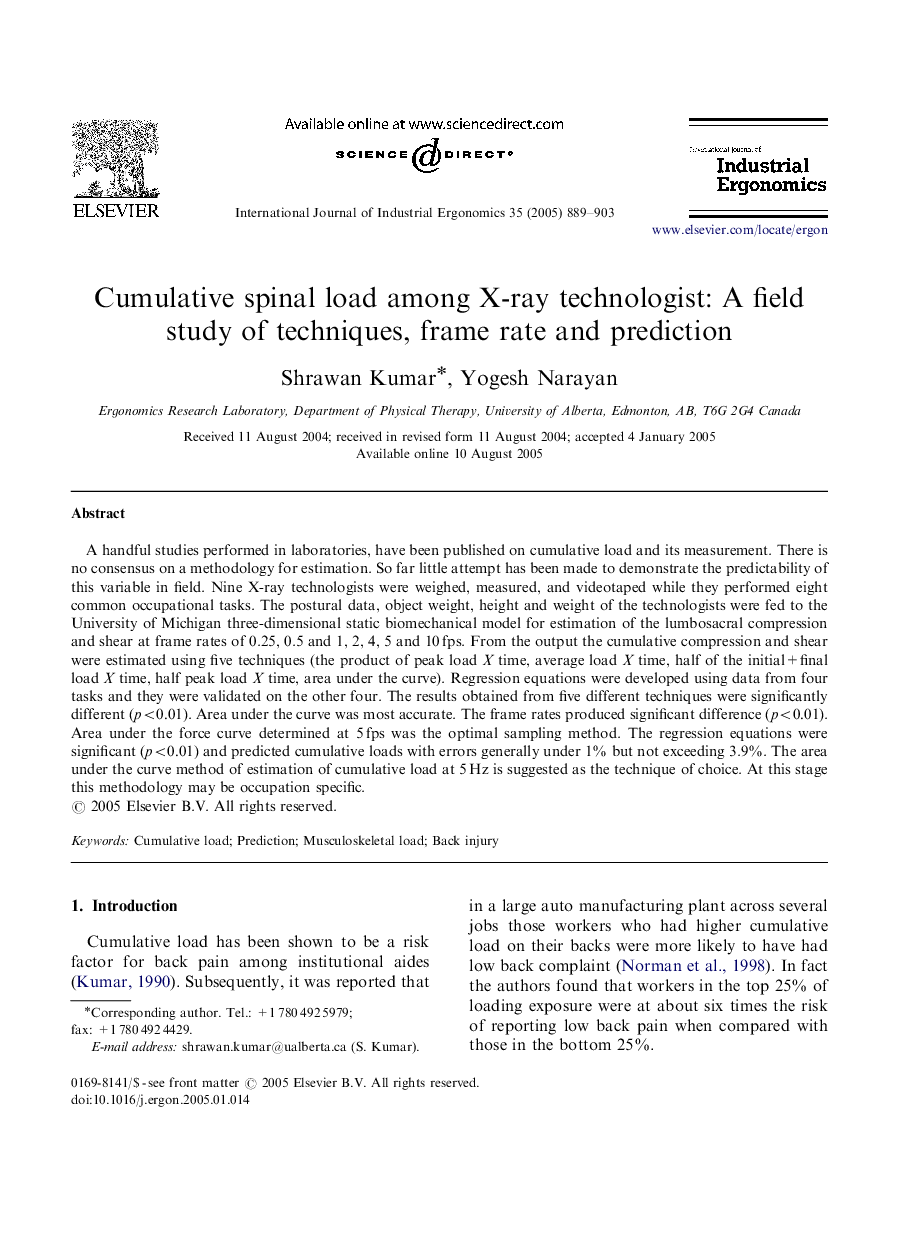| Article ID | Journal | Published Year | Pages | File Type |
|---|---|---|---|---|
| 9738424 | International Journal of Industrial Ergonomics | 2005 | 15 Pages |
Abstract
A handful studies performed in laboratories, have been published on cumulative load and its measurement. There is no consensus on a methodology for estimation. So far little attempt has been made to demonstrate the predictability of this variable in field. Nine X-ray technologists were weighed, measured, and videotaped while they performed eight common occupational tasks. The postural data, object weight, height and weight of the technologists were fed to the University of Michigan three-dimensional static biomechanical model for estimation of the lumbosacral compression and shear at frame rates of 0.25, 0.5 and 1, 2, 4, 5 and 10Â fps. From the output the cumulative compression and shear were estimated using five techniques (the product of peak load X time, average load X time, half of the initial+final load X time, half peak load X time, area under the curve). Regression equations were developed using data from four tasks and they were validated on the other four. The results obtained from five different techniques were significantly different (p<0.01). Area under the curve was most accurate. The frame rates produced significant difference (p<0.01). Area under the force curve determined at 5Â fps was the optimal sampling method. The regression equations were significant (p<0.01) and predicted cumulative loads with errors generally under 1% but not exceeding 3.9%. The area under the curve method of estimation of cumulative load at 5Â Hz is suggested as the technique of choice. At this stage this methodology may be occupation specific.
Related Topics
Physical Sciences and Engineering
Engineering
Industrial and Manufacturing Engineering
Authors
Shrawan Kumar, Yogesh Narayan,
